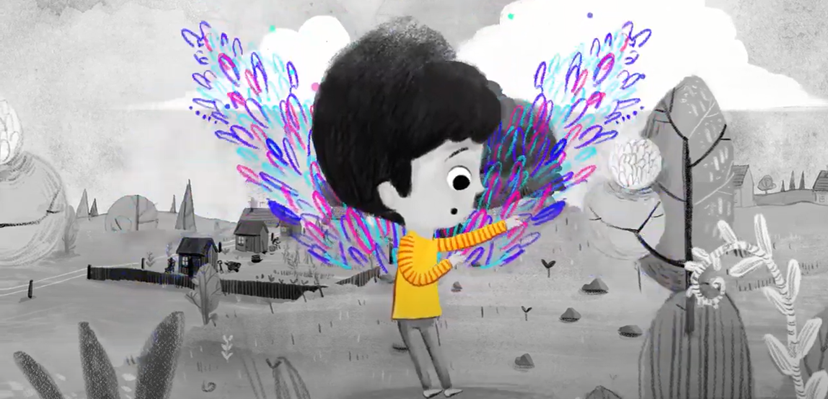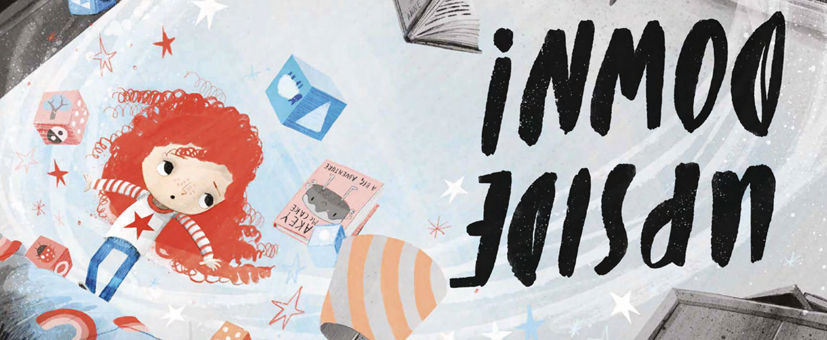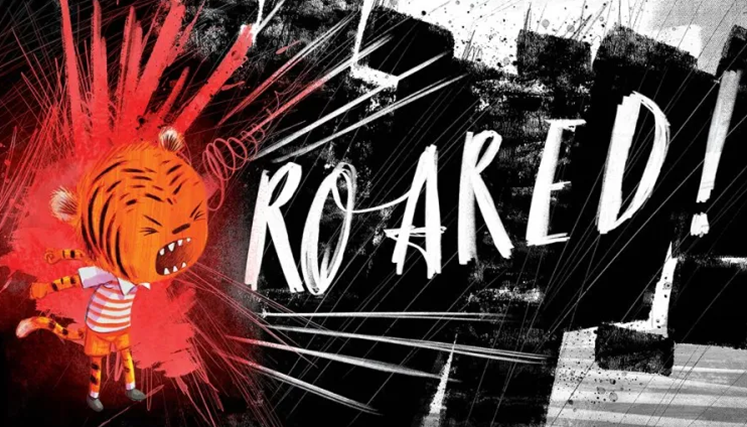Tom Percival


About Author
Tilda Tries Again is the latest picture book in Tom Percival's acclaimed Big Bright Feelings picture book series that helps children to acknowledge and understand their emotions. As well as picture books, Tom also writes older children's fiction, creates illustrations for middle grade books such as Skulduggery Pleasant by Derek Landy, and is part of a band called Grasscourt that Steve Lamaq has been championing on his 6music radio show. Tom lives in Stroud, Gloucestershire with his partner, Liz, and their two children.
Interview
Tilda Tries Again (Bloomsbury Children's Books)
August 2021
Tilda Tries Again is the latest addition to Tom Percival's bestselling Big Bright Feelings picture book series. This series of picture books helps children to acknowledge and understand their emotions and in Tilda Tries Again, he explores how a child might react when something happens that turns their world upside down.
Q&A with Tom Percival
1. Can you tell us a little about your Big Bright Feelings series of picture books, and how they started?
The Big Bright Feelings series of books explore emotional challenges for young readers in a light-hearted, visually playful way.
Having said that, it was never intended to be a series. Perfectly Norman was a standalone idea which I really liked. When I was working on my next book, Bloomsbury (my publisher for the Big Bright Feelings books) suggested that I could carry the minimal colour palette and vivid, fluorescent cover style on to the next book (which at that point was called 'Me and My Worry').
I was pretty resistant to that idea as I was REALLY happy with Perfectly Norman and didn't want to cheapen that book by 'copying' it in anyway. So, I ignored that suggestion and worked up Me and My Worry in full colour. Bloomsbury kept suggesting the idea of tying it in with Norman and then eventually I decided I'd give it a go and realised that they were totally right! It suddenly brought the book to life and looked really nice, so that was how Ruby's Worry was born and it was that book which really started Big Bright Feelings as an actual 'series'.

2. What are you aiming to create in each individual book?
I want each book to be a good story first and foremost. I want them to look as good as possible and take the reader on an emotionally satisfying journey. Because the books are primarily aimed at a very young readership, I try keep the messages simple and to the point, so I tend to focus on one singular challenge that the main character faces. I also present a simple solution to whatever that emotional challenge is, or if not a complete solution, then certainly a good starting point.
3. Do any of the Big Bright Feelings books stand out for you?
I feel that I can identify with ALL of the characters in all of the stories! I think that most of us can, we all have different points in our lives where we struggle with anxiety, or social complications, or coping with anger or frustration. Having said that, Perfectly Norman is my stand-out title. I think that's because it was the first picture book I ever created that wasn't fundamentally flawed in some way!
4. Is it hard to navigate telling a story in these picture books, while also delivering a message?
I don't find it too hard to balance those two things because I see them predominantly as stories. The 'message', such as it is, is basically just the backbone of the story. So, if I had a good theme, or an interesting concept but the story wasn't working then I'd go back to the drawing board, or I guess the writing board (or even more literally, my laptop!)
5. And also to leave 'space' for individual interpretation?
Where possible I do try to leave the books open to individual interpretation. That's why I didn't specify what Ruby (in Ruby's Worry) is worried about. If the reader had known that she was worried about moving house, or starting a new school, then it would have become a very specific 'issue' book and children who didn't have that specific concern might not feel that it resonated so much with them.

6. What gave you the idea for your latest picture book, Tilda Tries Again, and why did you want to focus on trying things out, even if they are outside our comfort zone?
I had the idea of how to represent a world feeling out of kilter first of all. It was just as lockdown had started and I was working in the garden when I thought that the world felt like it was upside down. Just to explain, this is because I am NOT a keen gardener, and for me to feel compelled to plant potatoes and carrots or basically ANYTHING AT ALL is not common!
Anyway, I then thought what if a character's world had literally turned upside down and got all jumbled up? It would be so hard to navigate, how might that character learn to live within this new version of her reality? And then the story developed from there.
7. How important are the illustrations for you in reinforcing the idea that's being developed in the text - so in Tilda Tries Again, Tilda's world is literally turned upside down?

The illustrations are hugely important to me. If I can't come up with an interesting way to visually represent the emotional challenge that the character is facing, then I'll park that idea for a bit until I can come up with a strong visual metaphor that works for me.
So, whilst I LOVE Meesha Makes Friends and I feel like it's a really good book, I'm slightly disappointed that I couldn't find a strong visual hook to tie into her emotional state. I had planned to have the 'friends' that she makes out of crafting materials come to life for her, to represent how rich her imaginary world is, but picture books are quite short and I just couldn't find a way to include that alongside a satisfying emotional journey. Sometimes you have to be ruthless when you make a book and often, I find that making a book as good as it can be is more about what you don't include.
8. How do you create a similar 'look' for each of these books through your illustrations?
Essentially, what links all the Big Bright Feelings books is the style of character design and the minimal colour palette. The main characters are all largely the same age, so the head to body ratio is pretty consistent across them all and all of the books employ monochrome, reduced colour or single colour sections to represent the characters mood. So, in Ravi's Roar, I use a lot of black, white and red when Ravi is a tiger because that just screams ANGER to me!

9. These books are brilliant to use at home, as well as school. Have any teachers got back to you with interesting ideas for sharing the books in class?
Yes, and it's something that always makes me happy. I love seeing the creative, interesting and inspiring ways that teachers take the themes of the books and use them within their lessons, whether its linked to art, crafts, PSHE or more, usually all three! And I love to see the work that their classes have created, there's always so much energy and life in their drawings.
10. Are you working on another Big Bright Feelings book?
I most certainly am! In fact, being as picture book publishing has very long lead times, I've already finished the next book! It deals with emotional jealousy as its core theme and I'm very, VERY happy with how it's turned out! Hopefully this time next year I can tell you all about it!
Ed: Great to hear that! And thank you for joining us on ReadingZone.
 Tilda Tries Again: A Big Bright Feelings Book
Tilda Tries Again: A Big Bright Feelings Book
 The Invisible
The Invisible
 Meesha Makes Friends: A Big Bright Feelings Book
Meesha Makes Friends: A Big Bright Feelings Book
 The Sea Saw
The Sea Saw
 Ravi's Roar: A Big Bright Feelings Book
Ravi's Roar: A Big Bright Feelings Book
 Ruby's Worry: A Big Bright Feelings Book
Ruby's Worry: A Big Bright Feelings Book
 Perfectly Norman: A Big Bright Feelings Book
Perfectly Norman: A Big Bright Feelings Book
